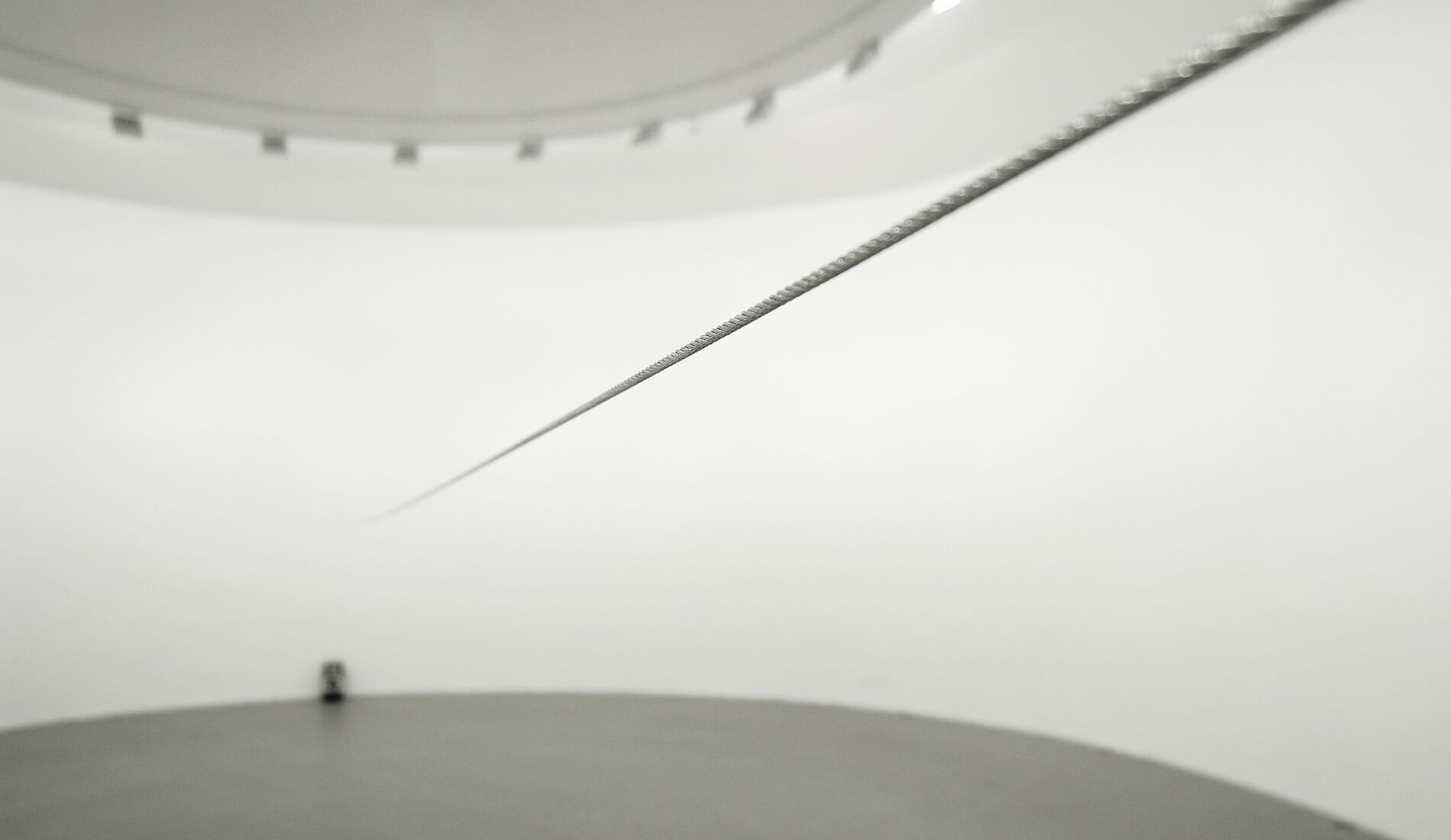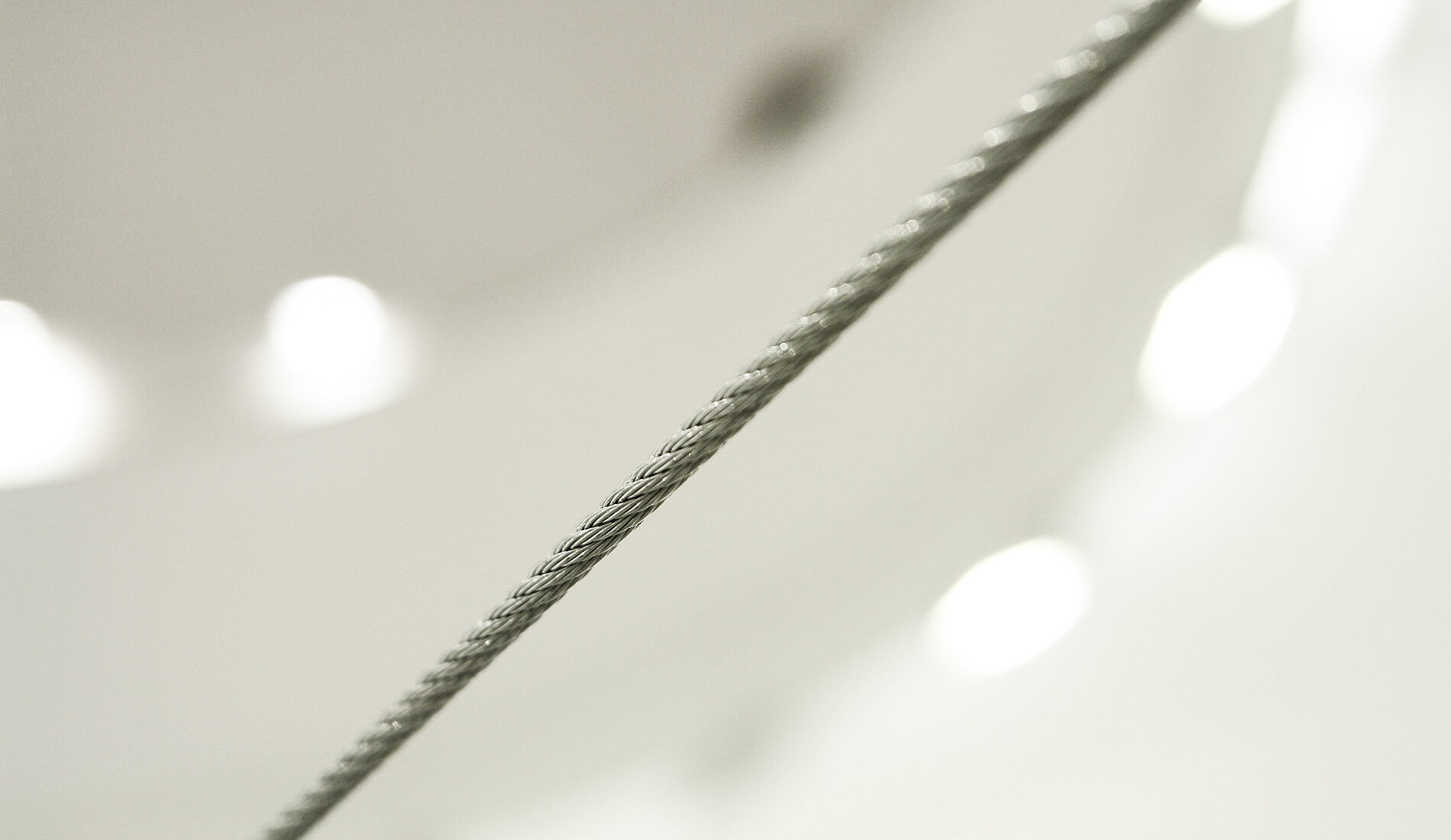

A curve is a one-dimensional formation. When it comes into three-dimensional space, then it becomes that invisible, complementary space of the two-dimensional, for a dimension greater than itself. To find oneself in a situation in which what is defined is less than what is undefined is rare, uncommon and without doubt both challenging and somewhat fatiguing. And it is just this situation into which we are taken by Daworp Earthman, exhibiting in the cylinder of the Barrel/Bačva Gallery a steel hawser that is suspended symmetrically across its diameter.
Two elements have a crucial impact on visitor’s to Daworp’s installation, when they want to understand, feel and supplement this - and after all this is incontrovertible - three-dimensional exhibit: visitor prior knowledge and the original music of SAbyAN CHEECHa. The permanent urban installation called Nine Views established in September 2004 with a fixed, rugged and motionless solar system still intrigues and amuse the Earthman in a aspect not then represented - the orbit. Nine Views, that is, replies to the questions What? and Where? but not to question How?. The nine planets are shown in fact in a single average (perhaps infeasible and hence unreal) position and located at an average distance from the Sun of Ivan Kožarić. If the planets were at a constant distance from the Sun, and they certainly are in Daworp’s motionless installation, and if they were nevertheless to move, their orbit would be a circle. Real motionlessness and the search for a mean value, as well as simplicity and acceptability to potential attendees, have thus sensibly changed the elliptical orbit of Earth at least intellectually into a curve that we can calculate with elementary procedures and which, by way of distinction from all other curves, we can feel our own, clear, elementary.
Placing a section of the Earth’s orbit in one of the levels of that strand passes along the central axis of the exhibition space so that this curve perforates the wall of the cylinder, Earthman almost completely elides the border between art object and the space, flirting with the surface of the diameter as part of the installation itself, constituting its volume. Only the contrasting black and white relation of exhibit and space isolates the curve in the impression and attracts visitor attention to what is in fact a slightly rounded single-dimensional formation. At the moment when, bringing out the aesthetics of the space, Daworp determined to dispose the orbit vertically, suspend it and leave it to the effect of the force of gravity, he permitted nature to make inroads upon the constant curvature of the circle. What he gained from this is the symmetrical and continuous rhythm of the circularity of the hyperbolic catenary that is greatest precisely on the central axis of the cylinder, least at the points where it touches the walls. The rational buoyancy and individuality is brought almost to the state of contradiction, for the complex to be an approximation of the simple; this is the situation that the artist inspiredly constructs for us here. Approximation and interpretation are in this installation in constant interfusion.
The electronic music of SAbyAN CHEECHa composed particulary for this exhibition is characterized by two elements. A one-dimensional pulsation of tones of the same frequency corresponds extremely well with the black suspended curve, while the flood of sound without a clear beginning and end to the composition gives the harmonic mainstay, volume, and becomes a kind of a equivalent to the walls of the Barrel Gallery’s cylinder, the catenary of which, that is rhythmic impulses of an entirely different colour, perforate. Dissecting this suggestive programme music down to its basic parameters is actually the content of it; rhythm and harmony remain not finally assembled parts of a formal unit.
However, let us return to the first image, the first impression to be received by visitors coming face to face with the pure and simple installation First Orbit, and this is in fact just a slightly bent curve. Do we really have a good feeling for scale and orders of magnitude, so that we can at once answer the question whether this section is part of the imaginary orbit of Earth from the installation Nine Views, or is it on the other hand a section of the real Earth orbit in its movement around the Sun. A model or a galaxy? In the first case, the dimensions of the observer become immense, in the second we are as we are. Can we really perceive this, or only find out after we have read the solution of the simple task for which it is enough to know Pythagoras’ rule, and see what radius of a circle the section of which is installed in the task has been calculated. Luckily, at the moment of perception, our dimensions can be brought down to the point at which the model will become real.
Mario Osvin Pavčević
